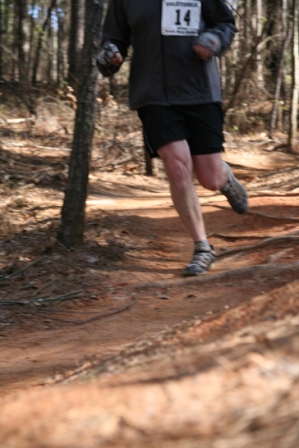Exercises to Strengthen your Ankles for Trail Running
Monday, August 30th, 2010 Every type of runner rolls or twists their ankle at sometime or another, but trail runners are especially susceptible to ankle injuries. Rocks, roots, shrubs, and uneven terrain can lead to devastating ankle injuries which can only be cured by rest; not cool for trail runners. Also, runners who are new to minimalist running should use ankle exercises before starting in their minimalist running shoes to ease the transition. Minimalist runners sustain more of an impact on their ankles than running in traditional running shoes. There are exercises that can be done to strengthen ankles to avoid injuries while trail running or minimalist running, here are some that you can practice:
Every type of runner rolls or twists their ankle at sometime or another, but trail runners are especially susceptible to ankle injuries. Rocks, roots, shrubs, and uneven terrain can lead to devastating ankle injuries which can only be cured by rest; not cool for trail runners. Also, runners who are new to minimalist running should use ankle exercises before starting in their minimalist running shoes to ease the transition. Minimalist runners sustain more of an impact on their ankles than running in traditional running shoes. There are exercises that can be done to strengthen ankles to avoid injuries while trail running or minimalist running, here are some that you can practice:
1. Walk 40 steps on the balls of your feet with your toes turned inward. Then walk 40 steps backward with your toes turned inward. This will help strengthen both the muscles on the outside of the upper ankle along with the muscles on the top the foot. This can also be done while riding a stationary bike. Simply pedal on the balls of your feet while inverting your toes slightly.
2. Walk backwards. Obviously do this in an open, grassy area or on a track to avoid tripping over something; and hurting your ankles rather than strengthening them. This exercise strengthens the muscles behind the ankle, and the calf muscles for an added bonus.
3. Rotate ankles 25 times clockwise and then 25 times counterclockwise. This is a good exercise because it can be done anytime of the day. This exercise strengthens the superior and interior extensor retinaculum; the ligament that binds down the tendons around the ankle. This rotation is a great overall ankle strengthener.
4. Sit in a chair with your back straight up against the back of the chair. Extend feet out parallel to the ground and point toes straight out. Do this 25 times a day to strengthen the muscles on the front of the upper ankle.
Doing these simple exercises will strengthen and stretch your ankles which will lead to less ankle injuries while trail running or minimalist running. If possible, do these exercises just before running in order to get a good stretch in your ankle muscles before heading out. Also, these exercises may cure cankles, although doctors still aren’t sure what causes or the exact cure for this horrible disease…hopefully some day…




